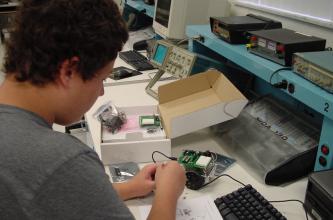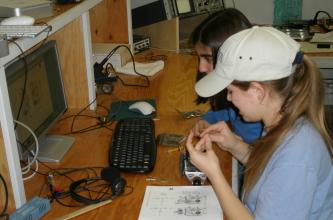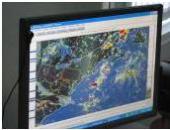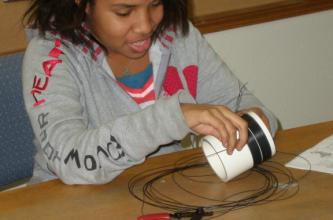-
Reports on Classroom Activities
Read comments from teachers about their classroom experiences with wireless technology topics. Pictured is a girl using a remote controller on a STEM project on a classroom floor. -
Articles and Stories
Read about how other teachers have incorporated Amateur Radio and resources from ARRL's Education and Technology Program into their classrooms. Pictured here are two students working in front of a computer station inside. -

Forum for Teachers
Teachers share ideas and questions about teaching wireless technology topics in our forum for classroom teachers. Pictured here is a student building a STEM project inside.
Exploring Amateur Radio and Wireless Technology in the Classroom
Activities that teachers have initiated in their classrooms include:
- Using weather imagery gathered by students for environmental studies.
- Using TV remotes to control simulated "smart homes".
- Radio Direction Finding (RDF) activities to study how naturalists track wildlife.
- Geography lessons using QSL card (postcards collected from ham contacts around the world).
- A school wide space exploration curriculum including radio stations to receive signals from satellites in space.
- Receiving and interpreting satellite telemetry.
- Building and using a radio telescope to explore the fundamentals of radio astronomy.
- Using GPS and APRS systems to track high altitude balloons and simulated search and rescue activities.
- Building and soldering electronic kits.
- Living radio history by building and using crystal radios.
- Receiving and studying naturally generated radio signals.
- Using VLF signals to study sudden ionospheric disturbances of the ionosphere.
- Programming and using microcontrollers to interface and control electronic devices and sensors.
- Mounting wireless sensors to land and marine robots to collect data for environment research.
- Controlling robots remotely by radio, and via satellite (the ISS) to simulate to simulate space research.
- Using EchoLink and IRLP resources to explore the connections between the Internet and radio systems for world-wide communication activities.
- Using ATV to connect students with video sharing of classroom activities.
- Learning about public service through school based emergency communications programs.
-

Programming a Robot
Students at John Muir Charter School program a micro-controlled robot. -
Students Receive NOAA Satellite Imagery
5th Graders at Sister Lakes Elementary School in Michigan watch, live from their classrooms, images of the remnants of Hurricane Ida received from satellite NOAA 17 on November 11, 2009. -

Students Practice Space Communications
Students in Nebraska learn what's involved in tracking a satellite to communicate by amateur radio. -
Buidling a Crystal Radio
This student at Granite Bay Montessori School in California winds a coil for a crystal radio.
Licensing, Education & Training >> Amateur Radio in the Classroom >> Classroom activities












